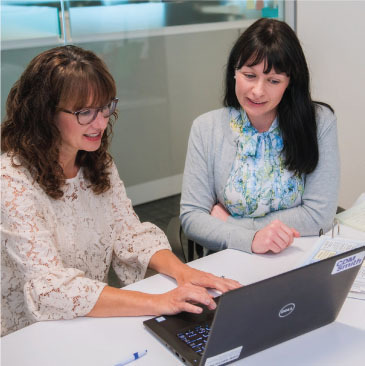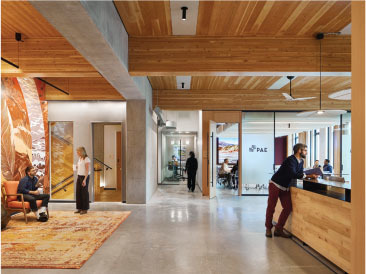September/October 2017
Communities: Private Practice
Where Many Mergers Fail, This One Didn’t. Here’s Why.
BY RICH FRIEDMAN
 Mergers and acquisitions are on the upswing in the AEC industry, and show no signs of slowing down. But just because it’s happening more doesn’t mean it’s happening successfully.
Mergers and acquisitions are on the upswing in the AEC industry, and show no signs of slowing down. But just because it’s happening more doesn’t mean it’s happening successfully.
Depending on whose statistics you follow, the failure rate of mergers and acquisitions ranges from 70% to 90%, and the AEC industry is no different. There is no magic formula for success, but there are factors that enhance your chances. In this article, we talk to two firm leaders about their successful merger (and an acquisition that didn’t fare as well), and the lessons they learned.
Know Your Potential Match
While some firms go through extensive searches to find the right partner, CEO Willy Stewart, P.E., and President George Stanziale Jr., of engineering, planning, and landscape architecture firm Stewart in Raleigh, North Carolina, have known each other personally and professionally since the late 1980s.
“We teamed together for projects and our clients also teamed us together,” says Stanziale, whose landscape architecture firm HadenStanziale employed 50 people at its largest. Stewart employed 130 people at its peak. Both firms were growing their reputations when the recession hit. While they weathered that storm by reducing size and focusing on a diverse mix of clients, the experience spurred talks about doing business differently postrecession and the benefits of a multidisciplinary approach.
The two firms worked in similar markets and had complementary staff. HadenStanziale was focused on high-level landscape architecture and urban design with engineering support, and Stewart was focused on civil and structural engineering with landscape design support. The synergies made it clear that they could expand their reach and capacity as a combined firm.
Does 1+1 = 3?
Assessing compatibility, creating client value, and building new opportunities is more important in mergers than ever before. In crafting a successful marriage, these factors can outweigh financial considerations. Here, the real value came from defining what the combined firm could look like and building a culture to support that vision.
“So many mergers aggregate more people to the same services,” says Stewart. “They focus on streamlining overheads to reduce cost. We knew that by coming together, we could offer something different to our market.”
They envisioned a firm where engineers and landscape architects were in equal leadership roles and where design, not discipline, was the focus.
“We wanted to create a group where engineers and landscape architects sat together, led projects together, and cross-collaborated in every way,” says Stanziale. “We wanted to deliver creative solutions that are aesthetically pleasing and practically engineered—high-level design and high-level engineering.”
That group, Land Planning & Design, is the firm’s largest and a differentiator that attracts both clients and new talent. “We have created a culture of design thinking across all disciplines, and as a result, we’re attracting designers who are at the top of their class,” says Stanziale.
Setting the Foundation
Stewart and Stanziale then tasked their second-level managers with identifying best practices from each firm in areas ranging from project management and technology to branding and workspaces. The intense three-month study process, with weekly presentations, was completed before any paperwork, beyond a memorandum of understanding, was signed.
Two human resources managers spearheaded the launch of Stewart University, an online training program to help employees understand the firm’s disciplines and how they integrate. The tagline “Stronger by Design” was developed to communicate the new collaborative, design-focused organization. “We rebranded the firm in every way,” says Stanziale.
So much advance work was done, with input from personnel in both firms, that when the merger and rebranding were complete, it nearly felt seamless.
Successes and Challenges
In five years, Stewart has seen remarkable growth and major wins. They credit both the firm’s culture and the credibility of their larger size and portfolio. Staff count has grown from 105 employees to over 200. Share value has doubled. A new service group, Global Sports & Events Planning, recently beat a larger global firm to land a high-profile contract with the PGA.
Yet no merger is without challenges. The Charlotte office had organizational shifts, and it took time to carve out the right roles for HadenStanziale’s senior leaders. “We did not do as well as we could have in understanding how we could take advantage of our capabilities,” says Stanziale.
But the biggest challenge—and the greatest lessons—came from the firm’s attempt to expand through a small acquisition in 2015. While the business drivers were clear—a new region, added capacity, and a new client market—there were cultural factors to weigh, says Stewart. In this case, the smaller firm was not culturally prepared for the systems, regulations, and processes that come with a larger entity. After a trial period, Stewart sold the company back.
“Mergers are emotional and complex,” says Stewart. “You both have to know why you are doing it. It takes total commitment from the top. If you get those components on the table before anything is signed, you have a better chance of succeeding.”
Rich Friedman is founder and president of Friedman & Partners, a marketing and management consultancy that helps AEC and environmental consulting firms craft and implement growth strategies. Contact Rich at [email protected].


 Volunteering at NSPE is a great opportunity to grow your professional network and connect with other leaders in the field.
Volunteering at NSPE is a great opportunity to grow your professional network and connect with other leaders in the field. The National Society of Professional Engineers (NSPE) encourages you to explore the resources to cast your vote on election day:
The National Society of Professional Engineers (NSPE) encourages you to explore the resources to cast your vote on election day:






